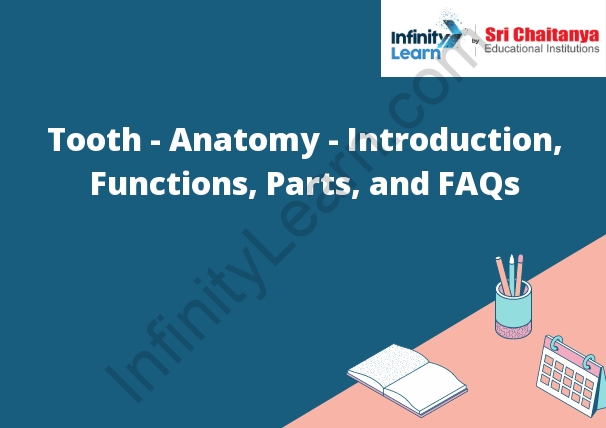Table of Contents
About Tooth:
A tooth is a hard, calcified structure found in the mouth of many vertebrates that is used for breaking down food. The tooth is composed of a crown, a neck, a root, and a pulp cavity. The tooth is anchored in the jawbone by the periodontal ligament.
A tooth is a small, hard, calcified, whitish structure found in the jaws (or mouths) of many vertebrates and used to break down food. The dental formula for humans is 2.1.2.3.
The teeth are essential for the digestion of food and are used in the mastication of food. The shape, size, and number of teeth vary from species to species, and may also vary within a species.
In most mammals, the teeth are divided into incisors, canines, premolars, and molars, which are successively smaller towards the rear of the mouth. The incisors are the front teeth and are used for cutting food. The canines are the sharp, pointed teeth used for tearing food. The premolars are used for grinding food into smaller pieces, and the molars are used for chewing food up into a pulp.
In humans, the incisors are the two teeth at the front of the mouth, the canines are the two sharp teeth just behind the incisors, the premolars are the four teeth just behind the canines, and the molars are the six teeth at the back of the mouth.
The human dental formula is 2.1.2.3. The numbers represent the number of each type of tooth in each jaw. So, for example, the dental formula for a human incisor is 2.1. The first number (2) refers to the number of incisors in the upper jaw, and the second number (1) refers to the number of incisors in the lower jaw.
Most mammals have 32 teeth. However, some animals, such as rodents, have fewer, and some animals, such as whales, have more.
The enamel of teeth is the hardest substance in the body. The dentin is a softer, yellowish material that lies beneath the enamel. The pulp is the soft, pinkish tissue in the center of the tooth that contains the nerves and blood vessels.
Tooth decay (also known as cavities or caries) is a common problem that can occur when bacteria in the mouth feed on sugary foods and produce acids that erode the enamel of the teeth. Over time, this can lead to the development of cavities.
Tooth decay can be prevented by brushing the teeth regularly with a toothbrush and toothpaste

Functions of Tooth Enamel
Tooth enamel is the hard, white, outer layer of tooth tissue that protects the tooth. It is the first line of defense against bacteria and acid. Enamel is composed of hydroxyapatite, which is a mineral.
Parts of Tooth
The tooth is made up of three parts: the crown, the root, and the neck.
The crown is the part of the tooth that you can see above the gum line. The root is the part of the tooth that is buried in the gum line. The neck is the part of the tooth that connects the crown and the root.
Anatomy of Tooth
A tooth is a hard, calcified, whitish-colored structure found in the mouth. It is one of the odont organs and is used for breaking down food. The tooth is composed of a crown and a root. The crown is the exposed part of the tooth that is visible above the gum line. The root is the part of the tooth that is embedded in the jawbone. The tooth is attached to the jawbone by a ligament.
The tooth has a crown, a root, and a ligament.
The crown is the part of the tooth that is visible above the gum line. It is composed of enamel, dentin, and pulp. The enamel is the hardest substance in the body and is responsible for the tooth’s color and strength. The dentin is a softer but tougher substance that makes up the bulk of the tooth. The pulp is a soft, spongy tissue that contains the tooth’s nerve endings and blood vessels.
The root is the part of the tooth that is embedded in the jawbone. It is composed of dentin and cementum. The dentin is a softer but tougher substance that makes up the bulk of the tooth. The cementum is a hard, calcified substance that covers the dentin and helps to hold the tooth in place.
The ligament is a tough band of tissue that attaches the tooth to the jawbone. It contains nerves and blood vessels that help to






